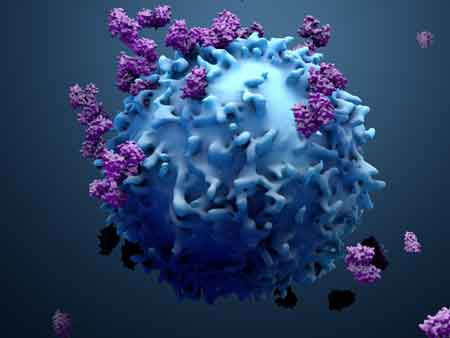 Antibodies are one of the best defenses the human body has come up with. Unfortunately, your natural immune system doesn’t always have the right tools in the toolbox to combat every virus that comes your way.
Antibodies are one of the best defenses the human body has come up with. Unfortunately, your natural immune system doesn’t always have the right tools in the toolbox to combat every virus that comes your way.
Until recently, lab-generated antibodies were hit-and-miss. Scientists had to get animals to make the antibodies for us. First, the right protein had to be identified, and then purified. When it was, it was injected into an animal who would then produce the required antibodies as part of its own immune response.
As you can imagine, this can be a very time-consuming process. In the meantime, the virus may have mutated in such a way that the new vaccine isn’t as effective, or worse, not effective at all.
Thanks to researchers at the University of Washington, this is about to change. With incremental advancements in the use of artificial intelligence predictors, AI may be able to model the required antibodies without the need for trial and error or even animals.
Led by University of Washington researcher David Baker, the new science trains AI using the end state (the structure of the desired protein) and noisy versions. The process can then “hallucinate” its way through the noise and find a reasonable end state to address the target response in the immune system.
Anyone who has worked with immune response mechanisms knows how challenging this can all be. The antibodies have to have the right shape to be able to stick to another molecule and then present all the right chemical conditions to make the interaction sticky. Humans make antibodies with four protein complexes: two heavy, two light. Each has regions that are constant and variable. The variable regions are what’s unique to every antibody, which has the ability to recognize the proteins in viruses and other pathogens.
Your body does this naturally, but it isn’t always good at recognizing which cells are viruses and which ones are not a threat. To increase the effectiveness of antibodies, the researchers are using AI to design optimal shapes so the antibodies will easily wrap around a specific target and keep the cell from dividing and replicating.
There’s a lot of work still to do. Tests so far have yielded antibodies that would bind with a flu virus and the toxin Clostridium difficile, but the strength of the interaction varied considerably. But the use of AI in predicting and then shaping antibodies has shown enough promise that researchers are confident that they can increase the effectiveness of antibodies in future treatments for diseases your body doesn’t always have tools of its own to fight.